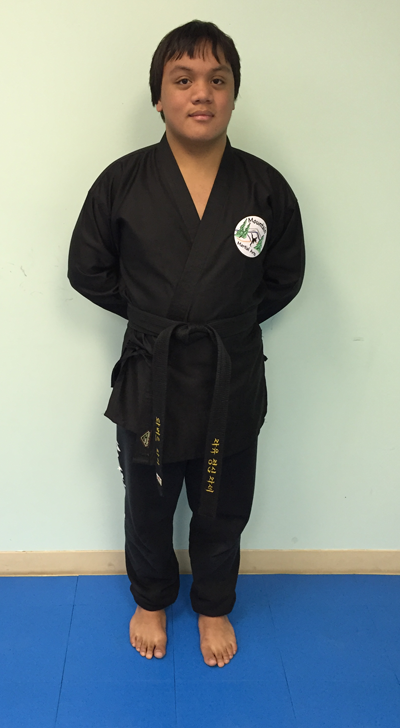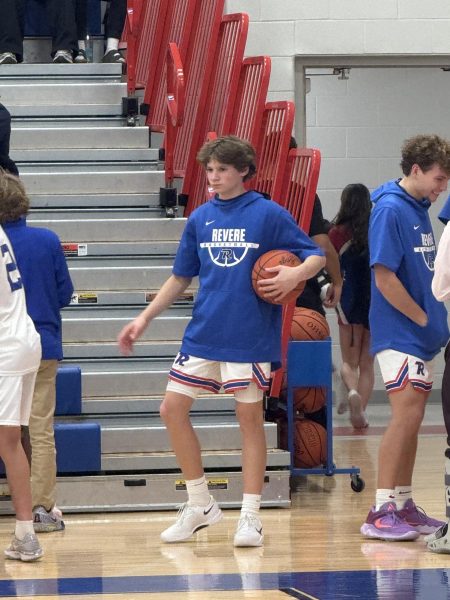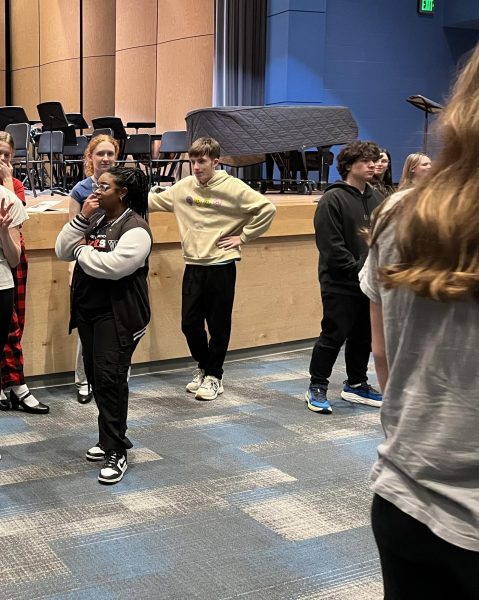Student practices mixed martial arts
Photo courtesy of Alex Isada. Used with permission.
Isada wears a Gi during practice.
A martial arts student bows to his opponent, knowing that he trained for a very long time to get to this point. He has put in countless hours of practice, perfecting his technique and form in order to succeed in this fight.
RHS junior Alex Isada has been practicing the martial arts of Taekwondo, which is the art of hand and foot fighting, since third grade. With the support of his family, friends and instructor, Isada has completed the honor of attaining a black belt.
Isada explained why he first started practicing martial arts.
“Originally, I took martial arts as a way of exercise. My parents and I were disappointed that at my middle school that there were no athletics that were of interest to me. My mom was the one who found an online advertisement for my martial arts school and it sounded interesting. I loved [it] from the first day. I thought it was fun, and my parents liked it as it was a family environment and it was good exercise for me,” Isada said.
Isada mentioned additional factors that got him involved in martial arts.
“As someone who was a very small kid in elementary school and sensitive about it, I saw martial arts as a way to get stronger and bigger. Another factor that kept me going when I was little was the movie Kung Fu Panda. I don’t know what it was about the movie but I dreamed of being able to do all the things that they could do in the movie. Now, I just have a passion for martial arts in general. That is what keeps me going,” Isada said.
Isada also described the types of martial arts that he practices.
“I practice the Korean martial art of Taekwondo and the Japanese art of Iaido. In the Taekwondo, the main part of the body to strike with is the foot and legs where the arms are used for defensive, blocking purposes. Despite this generalization, both are used for striking in the martial art. [Iaido] incorporates traditional Asian/Korean weapons like the staff, nunchucks, dombo-a short wooden stick with a string that is used like a little club), and shinai (Korean training sword that is used like a giant club-along with modern tools like the cane). Iaido is a very different martial art, as it purely focuses on the use of the Japanese samurai sword or katana. The name translates literally to ‘The Art of Drawing the Sword.’ The art stresses precision and speed over brute force,” Isada said.
Isada’s mother Loretta has also obtained a black belt in Taekwon Do, and she expressed her thoughts on the effects of it on Isada and other children.
“From the start, Taekwondo was clearly something Alex loved and did well. He rapidly learned new forms, [which are] techniques for defense and sparring skills. The class was not really all about Taekwondo, but rather emphasized respect, discipline, fortitude [and] dedication and promoted both learning and teaching. Martial arts was a great thing for the kids, because you are your own competition. You go forward at your own pace. You are not competing with others, nor do you impact a team positively or negatively if you miss a class or need to take a break, or are unable to master a skill immediately,” she said.
Isada’s martial arts instructor, Robert Parker, discussed what set Isada apart from other students.
“[Isada] is self-motivated, energetic, he cares about those around him, [and] he is very good with the younger students. He learns very quickly, he is respectful and earns the respect of those around him,” Parker said.
Isada explained the impact martial arts has had on his life.
“Even though I never had to use any of the techniques in martial arts to defend myself or others–I hope that I may never have to–the practice of martial arts has helped me focus on tasks I have had to do. I was diagnosed with ADD (Attention Deficit Disorder) in third grade. I was told that the condition would make paying attention in school much harder for me which in turn would make school harder for me later in life. Like most, I took medication that assisted me in focusing. While the medication gave me near instantaneous results, martial arts slowly drilled into me the importance of focus. During the first few years I was on medication I absolutely needed to have the medication to function in school, but by the time my year in eighth grade started I didn’t need my medication. In fact, it gave me a significant advantage, as it made focusing a piece of cake for me. I was told by my doctor this year that I officially do not need medication anymore. While some is to be attributed to just growing out of it, I attribute most to martial arts,” Isada said.
Isada’s mother discussed the importance of the lessons learned in martial arts, and how they can affect one’s life in the future.
“The life skills in the class are important. How kids and adults interact, and the teaching aspect and leadership skills are built in. Kids learn to teach adults, and they learn to run a class, and they learn to run a test for belt promotion. The students learn how to overcome obstacles and some tears and frustration, all leading to more determination and continued effort. The class emphasizes three things: family first, school work next and third martial arts. It’s fun, it’s something you can do alone or with others, and it gives a sense of pride and accomplishment,” Loretta said.
Isada discussed how he thinks his martial arts training will affect him later in his life.
“I hope that martial arts training will give me the skills necessary to survive. Also, I hope that the discipline, focus and adaptability will help me to do the things necessary to succeed in college and life. Many people go to college and adulthood and don’t know how to control themselves in that setting. I hope that I am able to control myself and succeed,” Isada said.
Isada, through hard work and determination, has acquired a skillset that has given him the proper tools to succeed in adult life.






